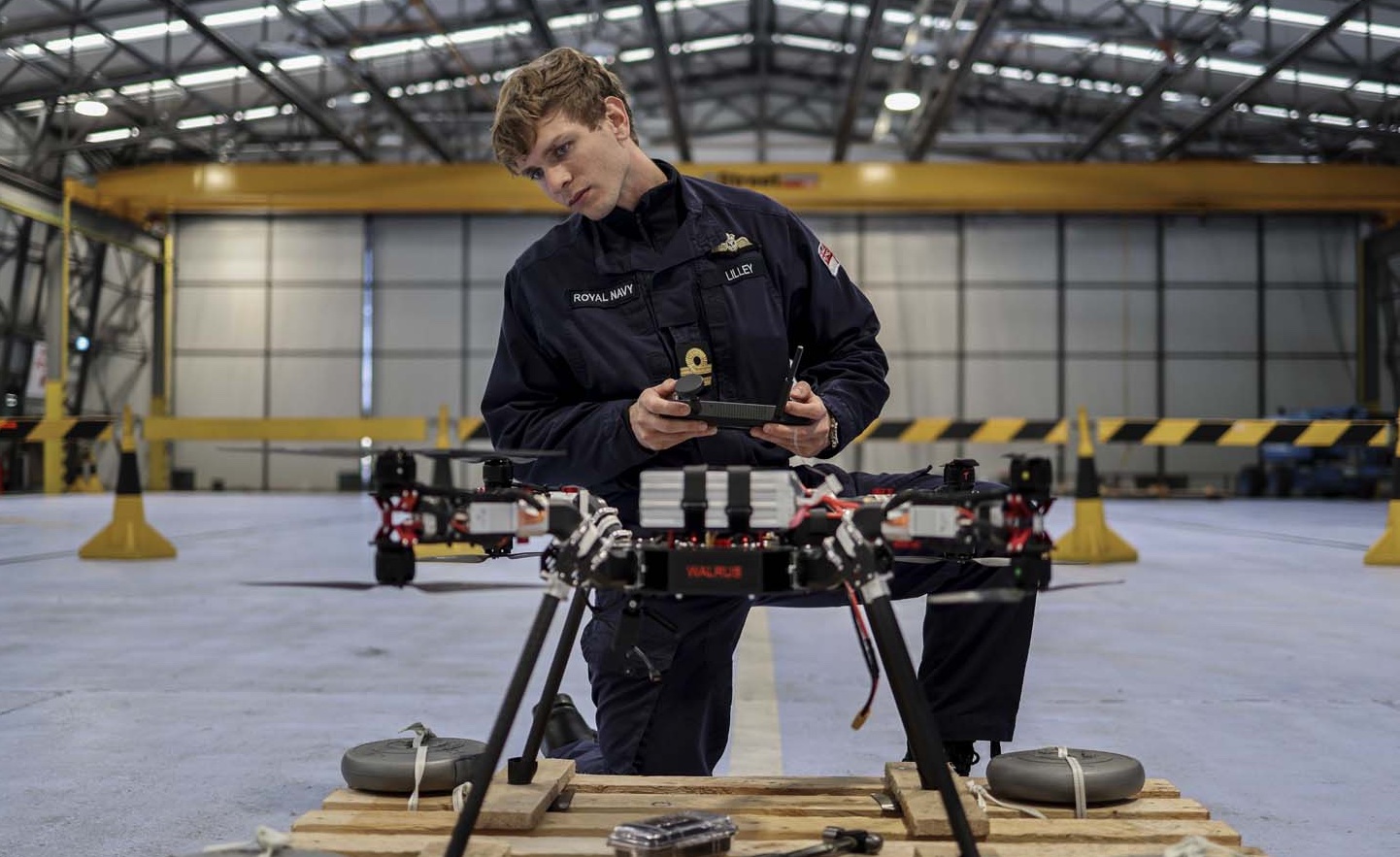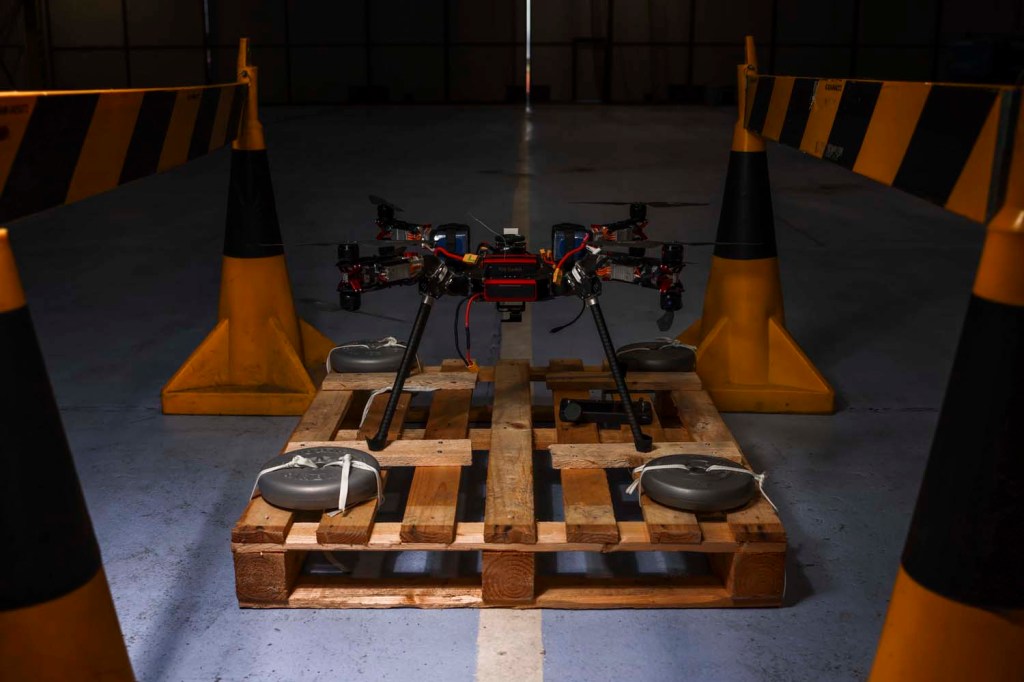
The UK’s Royal Navy has long pursued a variety of UAVs and related systems to assist and improve operations of its forces around the world, but now its specialized aviation tech unit has taken a step further by finally producing a drone of its very own.
The Royal Navy proudly revealed yesterday that engineers from its 700X Naval Air Squadron had begun initial trials of their 20 kilogram quadcopter they’ve affectionately dubbed “Walrus.” Continued work on the UAV will seek to develop it from its sophisticated DYI state toward a test-proven craft that may be used in preparing new aerial solutions for mission objectives naval units have.

Located in Culdrose on Cornwall’s southwestern Lizard Peninsula, the 700X Naval Air Squadron (“X” representing experimental) is tasked with overseeing the development of new, uncrewed, remotely piloted aerial tech. In finding ways to use drones to fulfill duties for Royal Navy and other UK armed forces that traditional craft either cannot do, or can carry out at much higher costs, the unit has worked on and adapted UAVs and operating systems from industry partners.
In putting its new, self-conceived Walrus drone through its first tethered control flights, 700X Naval Air Squadron is looking to use it as an in-house tool to evaluate and ready third-party aerial systems for deployment by Royal Navy and other forces.
“It’s an important step in our recognition of endorsed manufacturer status with the Military Aviation Authority,” Lieutenant Kristian Lilley, who oversees Walrus testing, said in a Royal Navy communiqué. “Built to high aviation standards, the Walrus will be used specifically as a testbed for sensors and other sensitive payloads. It will be our independent test and evaluation platform. As we’ve built it, we know the system and exactly what it’s capable of.”

In recent years the 700X Naval Air Squadron has worked on drone systems for the Royal Navy that can provide long-haul cargo deliveries to or between ships, speed blood supplies to frontline forces, and even assist rescue of overboard sailors. Its research has also guided the selection of heavy-lift drones, and facilitated census operations of Sandwich Island penguins.
Read: Royal Navy looks to drones to improve its capabilities on HMS Tamar
Named after World War II vintage planes that could takeoff, land, and idle on water, the general concept of the nascent Walrus UAV has been kicked around by 700X Naval Air Squadron engineers for a while.
But now the first prototype of the drone is assembled and going through its initial testing, Lilley says it will become an integral part of the Royal Navy’s research and drone deployment process.
“We’re now testing it using a rigorous regime here in a controlled environment… (and) when we’re confident it’s operating correctly and safely, we’ll conduct our first flying tests, probably in the new year,” Lilley said. “This technology has been around for a few years, but we’ve really seen it expand recently, particularly in scale. There’s no doubt that it’s here to stay and will increasingly play a role in all our lives.”
Photos: Royal Navy/Barry Swainsbury
FTC: We use income earning auto affiliate links. More.



Comments